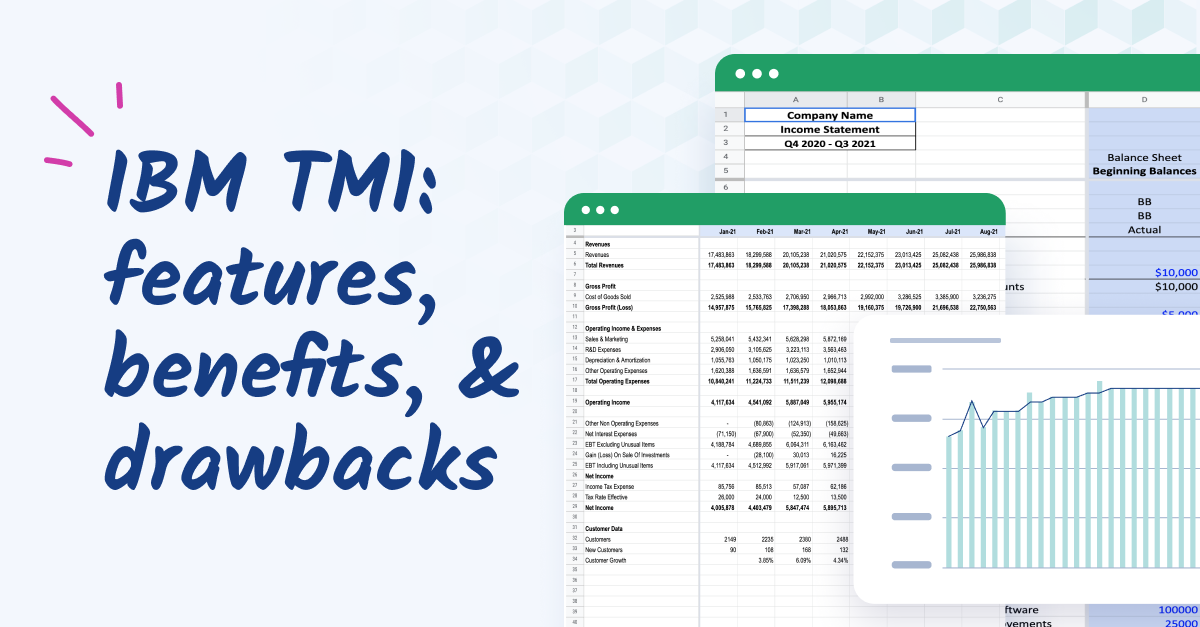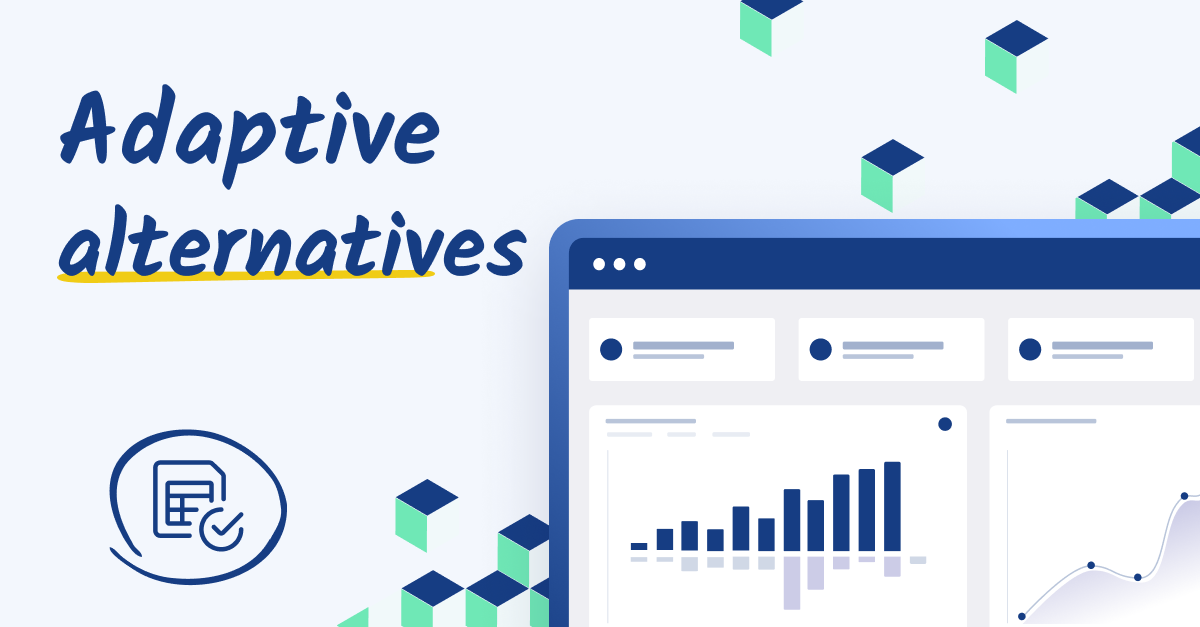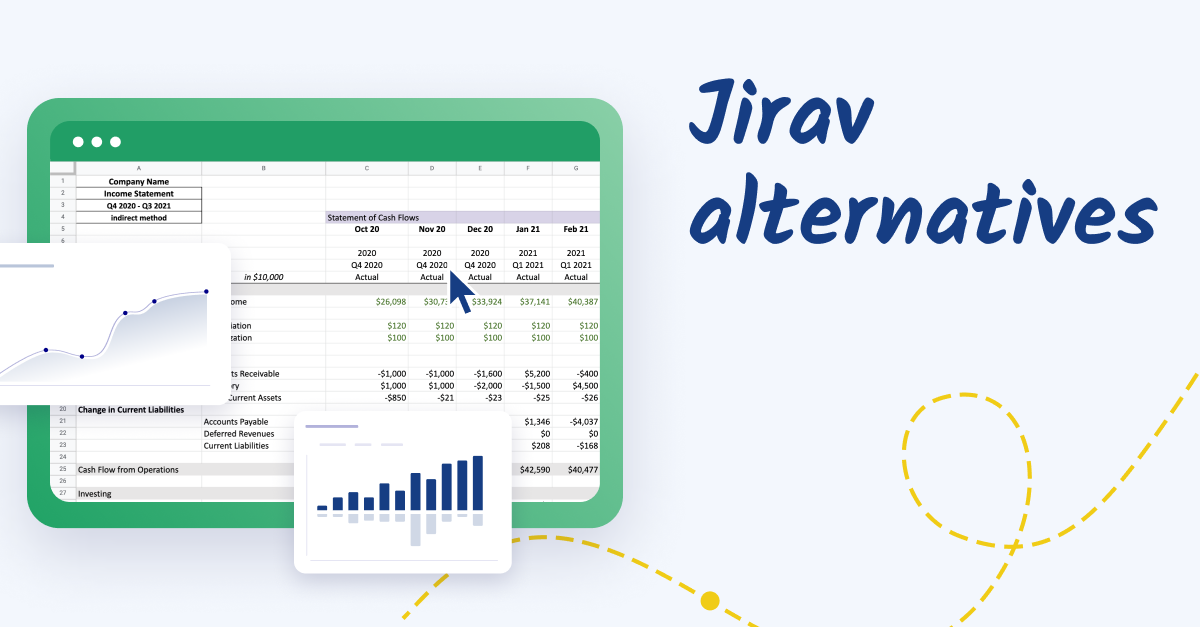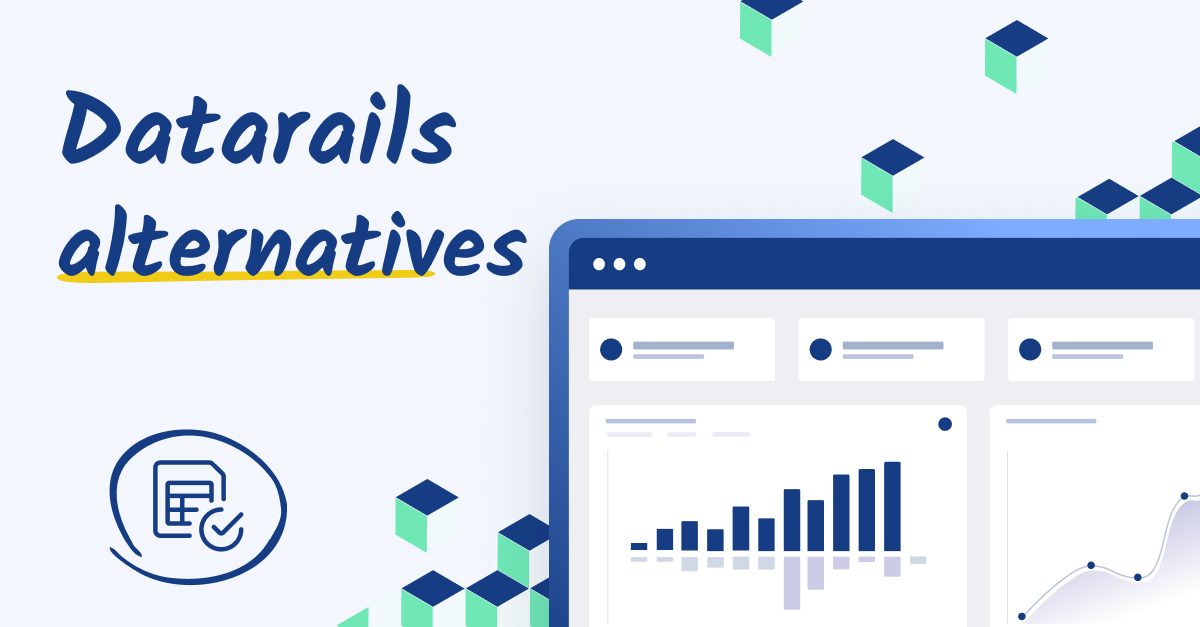At a glance: IBM TM1
IBM TM1, which stands for Table Manager 1, is a software tool designed for FP&A, part of the broader IBM Planning Analytics suite. It's a multidimensional, in-memory OLAP database with a spreadsheet-like structure that lets users develop sophisticated financial models and perform calculations with control and governance.
The tool's history dates back to the 1980s, evolving from a standalone application to becoming an integral part of IBM's business intelligence offerings. Over the years, TM1 has adapted to the changing needs of businesses, incorporating more sophisticated features for data analysis and business planning.
TM1 serves as a powerful resource for finance professionals, enabling them to manage and analyze large volumes of financial data efficiently. It allows for complex budgeting, forecasting, and financial reporting, which are essential in today's data-driven business environment. TM1 provides the flexibility, interactivity, and modeling power of spreadsheets, but retains the control, security and scalability of a database.
Cubes (multi-dimensional arrays of data), dimensions (categories by which data is organized), hierarchies (organization of dimension members), and rules (instructions that guide database behavior) are the essential components of TM1. They offer finance teams a framework for managing and analyzing planning data, which gives them greater visibility into their operations and performance.
Key features
The strength of IBM TM1 lies in its core features that cater to the multifaceted needs of FP&A teams, including:
- Multi-dimensional data analysis: This feature allows users to examine data from various angles and dimensions (like time periods, product lines, geographic regions, etc.). This sort of multidimensional approach is ideal for businesses that need to dissect complex financial data into more understandable segments for better decision-making.
- Flexible planning and forecasting: TM1 offers extensive flexibility in business planning and revenue forecasting, which is vital for adapting to the ever-changing business landscape. Users can create detailed financial models and forecasts, allowing them to simulate different business scenarios. This flexibility is particularly beneficial for companies looking to stay agile and responsive to market changes.
- Real-time data processing: A key advantage of TM1 is its capability for real-time data processing. This means the system updates information as soon as it's entered, offering immediate insights and analysis. This real-time aspect ensures that financial data is always current, which is essential for timely and accurate decision-making in fast-paced business environments.
These features make it a solid tool for finance professionals, offering a comprehensive solution to manage and analyze financial data effectively. Its ability to provide detailed, real-time insights makes it a valuable asset for any organization looking to enhance its FP&A capabilities.

Top 3 benefits of TM1 for finance and FP&A leaders
IBM Planning Analytics offers a range of benefits tailored to meet the intricate needs of finance and FP&A leaders. Its capabilities in advanced budgeting and forecasting, efficient management reporting, and customization and scalability make it a powerful tool. Let's take a closer look at the benefits:
1. Advanced budgeting and forecasting
One of the key benefits of TM1 is advanced budgeting and forecasting capabilities. TM1 aids in creating more accurate and dynamic financial models, which are crucial for effective planning.
The tool allows you to build complex, multi-dimensional models that can accommodate a wide range of variables and scenarios. This ability to incorporate various financial and operational data points leads to more precise and comprehensive budgeting and forecasting.
The flexibility to adjust and update these models in real-time as new data becomes available or as market conditions change ensures that financial plans remain relevant and accurate, providing a solid foundation for strategic decision-making.
2. Efficient reporting and analysis
Another significant benefit of IBM Planning Analytics is efficiency in reporting and analysis. TM1’s reporting tools are designed to streamline the often time-consuming process of financial reporting. These tools enable quick and efficient generation of reports, ranging from standard financial statements to more bespoke management and operational reports.
The efficiency gained through IBM Planning Analytics’ reporting capabilities not only saves time but also allows finance leaders to focus more on analysis and less on the mechanics of report generation. The ability to quickly access and analyze financial data enables more informed and timely decision-making—a critical factor in fast-paced business environments.
3. Flexibility and scalability
TM1's flexibility and scalability are also major benefits for businesses of all sizes. The software can be tailored to meet the specific needs of an organization, ensuring that the FP&A processes align with the unique business model and operational requirements. This means that TM1 can grow and adapt as a business evolves, making it a long-term solution for financial management.
Scalability is particularly important for growing businesses that need a planning tool capable of handling increased complexity and volume of data. TM1’s ability to scale ensures that it remains a suitable and effective tool, even as a business expands and its financial needs become more sophisticated.
Top 3 drawbacks of IBM TM1
While IBM Planning Analytics offers many advantages for FP&A, it also comes with certain drawbacks that finance and FP&A leaders should consider. Understanding these limitations is essential for a balanced view and to determine if TM1 aligns well with your organization's specific needs.
1. Steep learning curve
One of the primary challenges associated with TM1 is its complexity. The software's advanced capabilities and multidimensional nature, while beneficial, also contribute to a steep learning curve.
Mastering TM1 requires a significant investment in time and training. For new users, especially those without a background in similar tools, the initial phases of adopting TM1 can be daunting. This can lead to longer implementation periods and may require additional resources for training and support. Organizations need to consider these factors and be prepared to invest in adequate training to fully leverage the capabilities of IBM Planning Analytics.
2. Limited support for mobile devices
The mobile accessibility of IBM TM1 is somewhat restricted. This limitation can be a significant drawback in today’s business environment, where mobile device usage is prevalent and often essential for real-time data access and decision-making.
Users might find it challenging to access or interact with TM1’s features efficiently on mobile platforms, leading to potential delays in accessing critical information or making timely decisions when away from a traditional desktop setup..
3. Inadequate training and support
Users have reported that the training and support provided for IBM TM1 are not as comprehensive or helpful as expected. This lack of adequate training can exacerbate the steep learning curve, making it difficult for users to leverage the software’s full potential.
Additionally, insufficient support means that when users encounter issues or complexities, they may not receive the timely or effective assistance needed, potentially impacting their workflow and the overall utility of the software in their business processes.
Evaluating whether IBM TM1 is right for your organization
Determining if TM1 is the right choice for your organization involves a thorough evaluation of your specific business needs, a comparison with other available tools, and considering the long-term implications of your choice. It’s not just about what TM1 offers but how these features align with your organizational goals and requirements.
Assess your business needs
Begin by conducting a detailed analysis of your organization's forecasting and planning requirements. Consider the complexity of your financial data, the scale of planning and forecasting needed, and the level of real-time data processing required. Assess whether TM1's capabilities in multidimensional data analysis, budgeting, forecasting, and reporting align with these requirements.
It's also important to consider the technical expertise of your team and whether they have the skills to leverage TM1 effectively or would need significant training.
Compare alternatives
While evaluating TM1, it's beneficial to look at other planning tools available in the market. This comparison should focus on features, scalability, user-friendliness, and cost-effectiveness.
Even without direct comparisons, understanding the landscape of available tools will help in making an informed decision. Pay attention to how each tool meets your specific needs and the unique value it offers.
➡️ Check out our Ultimate Guide to FP&A Software for an in-depth look at the top 13 software options on the market. ⬅️
Consider the long-term
Think about the long-term implications of implementing TM1. Consider factors like the frequency and ease of software updates, the quality of ongoing support from IBM, and how well TM1 can scale as your business grows. Long-term costs, both in terms of financial investment and the time required for maintenance and updates, are also crucial factors.
Ensure flexible integration
Assess how well TM1 can integrate with your existing systems. Compatibility with your current IT infrastructure and the ease of integrating with other tools and systems should be a key consideration. This ensures that you can maintain a seamless workflow and data consistency across different business functions.
Asses customization and adaptability
Finally, consider TM1’s customization and adaptability to your evolving business needs. The tool should not only meet your current requirements but also have the flexibility to adapt to future changes in your business environment, market conditions, and regulatory requirements.
By carefully considering these aspects, you can make a more informed decision about whether IBM TM1 is the best fit for your FP&A needs, both now and in the future.
Conclusion: find your perfect match
When considering IBM TM1 for your organization, the key is to carefully evaluate how it meets your specific business needs. Look at its features realistically, compare it with other options available, and think about how it will fit into your long-term plans. Your decision to experience IBM Planning Analytics should be grounded in a solid understanding of its capabilities and limitations, tailored to the unique demands of your company.
Want to learn how Cube may better fit your needs? Request a free demo today.



.png)









